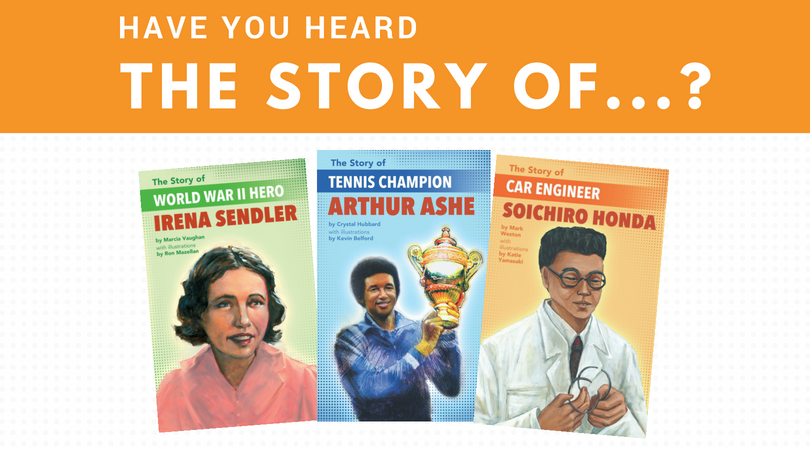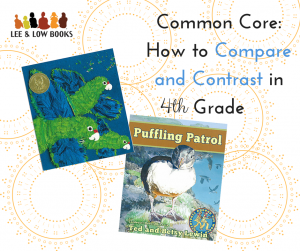In this guest post, author Christy Hale connects the dots between her companion books just as she connects the dots between themes in her writing. Copycat: Nature-Inspired Design Around the World is available wherever books are sold.
Continue readingTag Archives: informational nonfiction
“We are one human family”: An interview with author Jan Reynolds
JAN REYNOLDS is an award-winning author and photographer  whose work has appeared in numerous publications, including National Geographic, The New York Times, and Outside magazine. Her nonfiction books for young readers include Celebrate! Connections Among Cultures; Cycle of Rice, Cycle of Life; and Only the Mountains Do Not Move. She also holds the world record for women’s high altitude skiing, was part of the first expedition to circumnavigate Mount Everest, and performed a solo crossing of the Himalayas.
whose work has appeared in numerous publications, including National Geographic, The New York Times, and Outside magazine. Her nonfiction books for young readers include Celebrate! Connections Among Cultures; Cycle of Rice, Cycle of Life; and Only the Mountains Do Not Move. She also holds the world record for women’s high altitude skiing, was part of the first expedition to circumnavigate Mount Everest, and performed a solo crossing of the Himalayas.
Jan’s newest picture book, The Lion Queens of India, follows a group of female park rangers in Gir, India who are tasked with protecting the endangered Asiatic lion. In this interview, we talk with Jan about writing the book and her life traveling the globe in search of stories and connections. Continue reading
Introducing Lee & Low’s New Line of Chapter Book Biographies

Chapter books are an essential stepping stone on the road to literacy. Chapter books allow young readers to linger in a story, and provide a bridge between picture books and more complex, challenging texts. But when it comes to diversity, chapter books still lag behind. Many classroom shelves and home libraries are lined with the same worn chapter book series that kids have been reading for decades, without much variety.
At Lee & Low, we believe that it’s just as important for young readers to have access to diverse chapter books. That’s why we’re excited to launch our “The Story Of” series, a new line of chapter book biographies out now. These chapter books go beyond the common names to introduce readers to amazing leaders and heroes whose names you might not know but whose achievements have shaped our world. Continue reading
Culturally Responsive Teaching in Grade 4: Studying Informational Text

In this ongoing series, we explore what culturally responsive teaching looks like at different grade levels and offer concrete examples and resources. Last month we explored culturally responsive teaching around Valentine’s Day. This month, educator Lindsay Barrett offers guidance for a culturally responsive study of informational text at the fourth grade level.
Selecting diverse stories and setting up related discussions are important and logical aspects of ensuring that your classroom is a culturally responsive one. Stories have the power to draw students in, inspire them, make them feel seen and heard, and stretch the boundaries of their thinking. Continue reading
Strategies for Teaching English Language Learners – Part 2: Choosing a Text and Vocabulary Words
 Jill Eisenberg, our Resident Literacy Expert, began her career teaching English as a Foreign Language to second through sixth graders in Yilan, Taiwan as a Fulbright Fellow. She went on to become a literacy teacher for third grade in San Jose, CA as a Teach for America corps member. She is certified in Project Glad instruction to promote English language acquisition and academic achievement. In her column she offers teaching and literacy tips for educators.
Jill Eisenberg, our Resident Literacy Expert, began her career teaching English as a Foreign Language to second through sixth graders in Yilan, Taiwan as a Fulbright Fellow. She went on to become a literacy teacher for third grade in San Jose, CA as a Teach for America corps member. She is certified in Project Glad instruction to promote English language acquisition and academic achievement. In her column she offers teaching and literacy tips for educators.
As I mentioned last week, the U.S. Department of Education’s Institute of Education Science (IES) and What Works Clearinghouse (WWC) released the latest educator’s guide to present best instructional practices for English Language Learners.
Let’s take a look at the guide’s first recommendation: Teach a set of academic vocabulary words intensively across several days using a variety of instructional activities.
Here is an example of how to apply the first recommendation using IES’s process and Lee & Low Books’ informational nonfiction text, Drumbeat In Our Feet.
How to Compare and Contrast with the Common Core in Fourth Grade
 Fourth grade is a significant juncture for readers because the Common Core State Standards prescribes that 50% of reading material should be nonfiction. One of the critical skills on Common Core-aligned end of year assessments is compare and contrast. By the end of the fourth grade, students need experience in comparison for both fiction and nonfiction works. Practice in comparison not only improves a student’s close reading abilities, but also enables educators to gauge student comprehension and interpretation.
Fourth grade is a significant juncture for readers because the Common Core State Standards prescribes that 50% of reading material should be nonfiction. One of the critical skills on Common Core-aligned end of year assessments is compare and contrast. By the end of the fourth grade, students need experience in comparison for both fiction and nonfiction works. Practice in comparison not only improves a student’s close reading abilities, but also enables educators to gauge student comprehension and interpretation.
In honor of Parrots Over Puerto Rico winning the 2014 Robert F. Siebert Medal for the most distinguished informational book for children published in 2013, I am comparing Parrots Over Puerto Rico with Puffling Patrol. This book comparison is useful because the books tackle similar central ideas, yet have very different text structures and presentations of information.
I have created sample questions to teach towards and check mastery of each of the three Common Core categories. These are by no means the only questions to ask in each category, but these provide an overview of the progression in question complexity and mastery of the texts.
By creating a range of compare and contrast questions across the standards, we are able to differentiate for students within a class, provide extension opportunities for ready learners, or move the whole class from literal- to higher-level thinking over the course of several lessons.
Texts:
Parrots Over Puerto Rico (level: Q)
Puffling Patrol (level: R)


